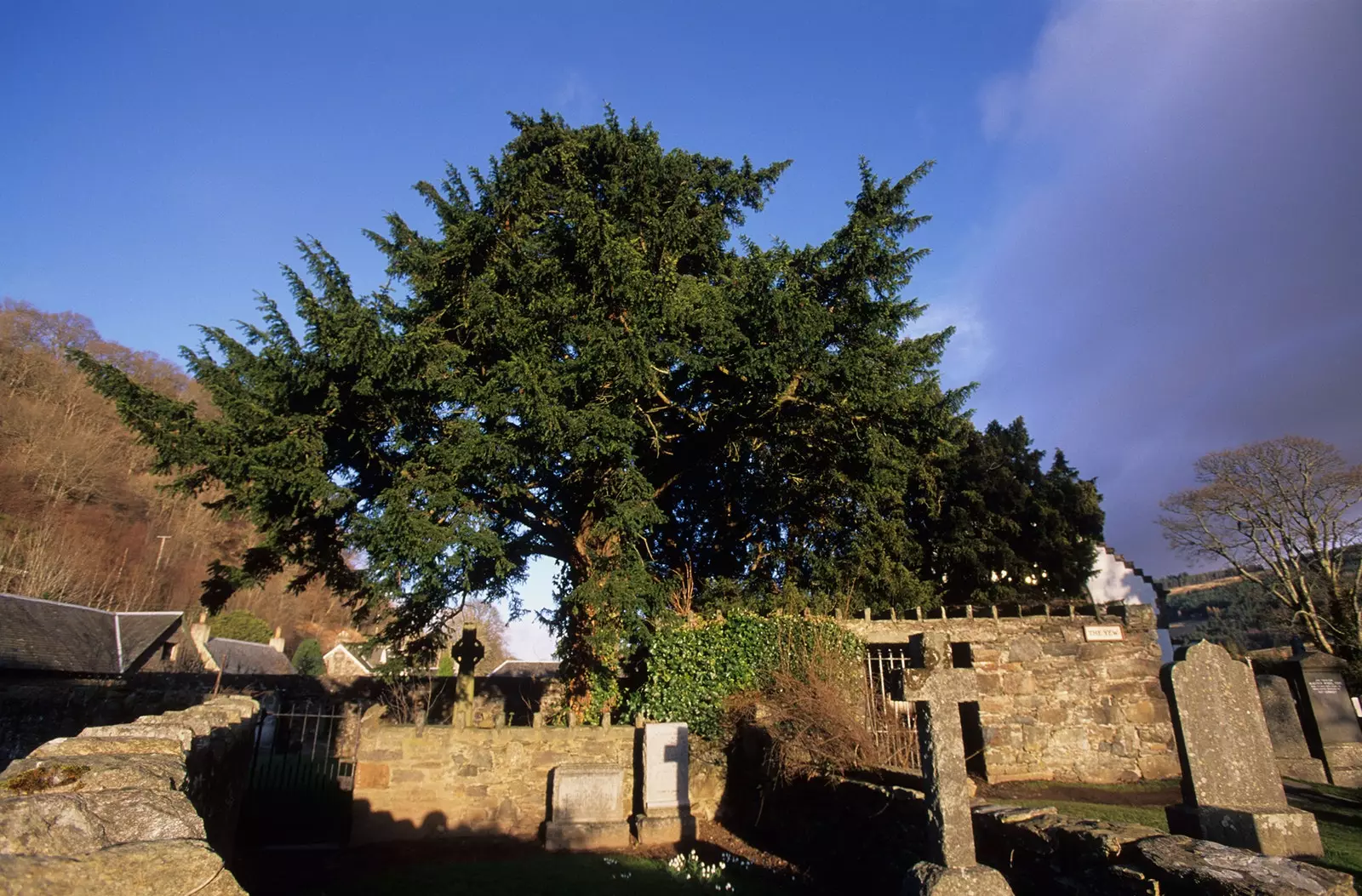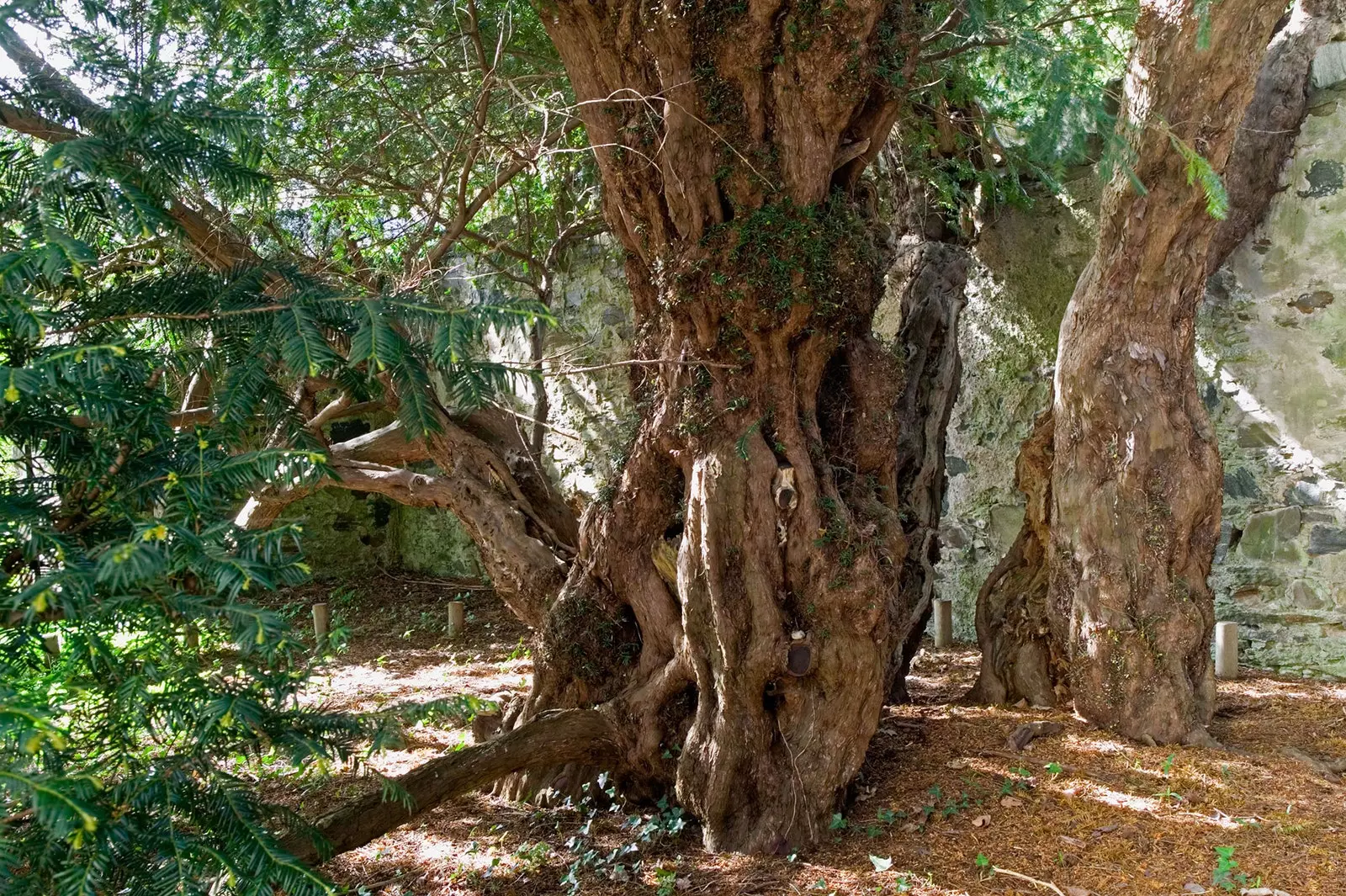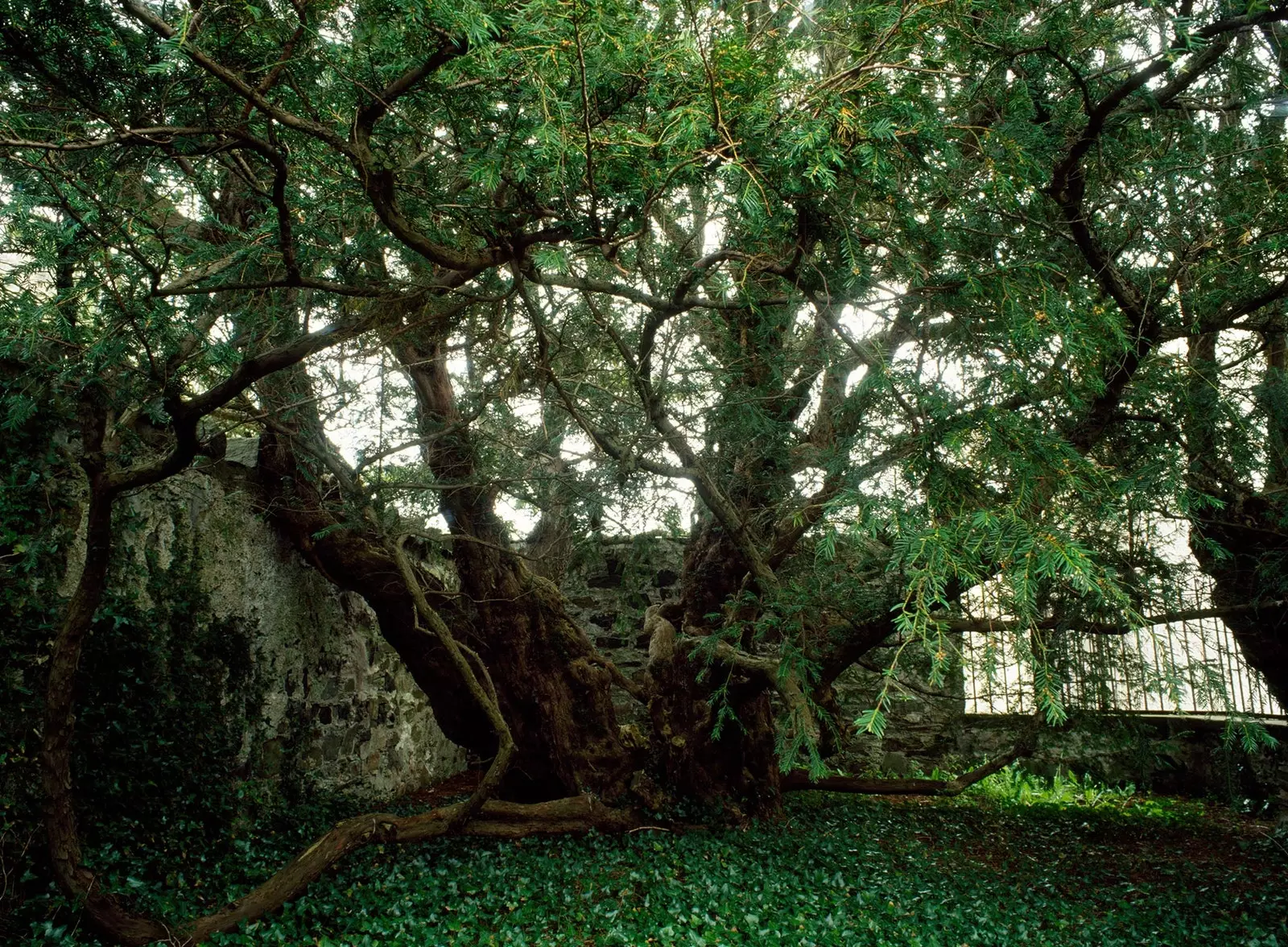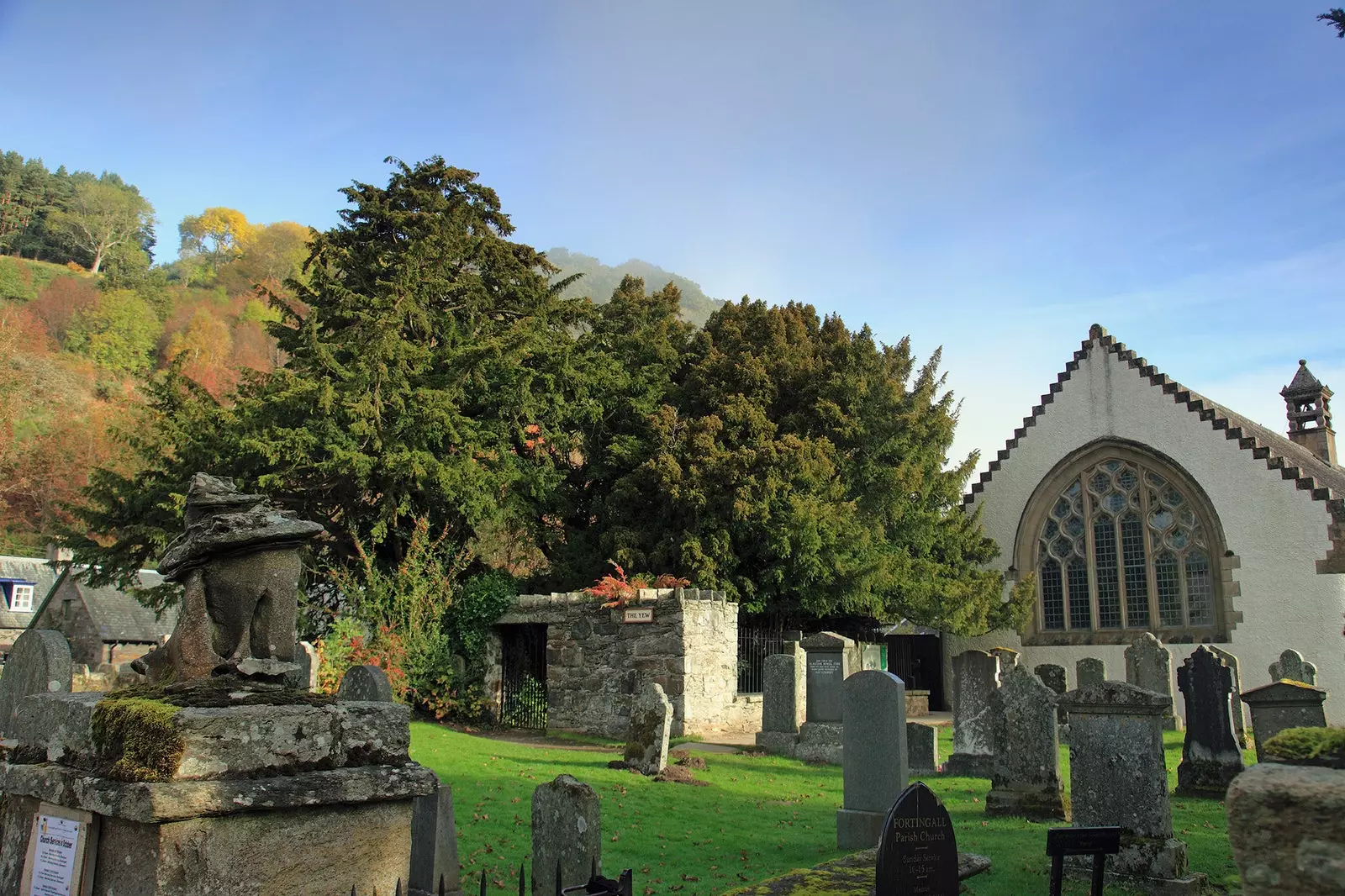
The Fortingall Yew
It is not in danger of dying in the coming decades, they even hope it will last for centuries. At least that is what Catherine Lloyd, coordinator of the Tayside Biodiversity Partnership, has explained to Traveler.es, who has assured that, although it is true that the presence of tourists taking parts of the tree does not help, The story of the Fortingall yew tree has been exaggerated in different media.
Located in Fortingall, a small town in the heart of County Perth (central Scotland), “the Fortingall Yew is supposed to be the oldest tree in Europe and could have between 3,000 and 5,000 years. It has been said that the tree could be even older, from 8,000 or 9,000 years when the Ice Age ended. But we don't know."

The yew is large, robust and stately
The yew is large, robust and stately, despite the fact that it does not reach the dimensions of other times when, for example, in 1769 its trunk reached 17.5 meters in diameter.
The Fortingall yew tree has grown strong by enduring the damage it has suffered over the centuries. And, as Lloyd explains, "you They have made holes there are even stories of bonfires made inside during popular festivals and even one that tells how they made a horse pass through its interior”.
He hasn't survived all this so that, now, tourists bother him by taking cuttings, cutting branches and leaves and even jumping inside the walled enclosure to reach him.
“We don't know the stress level of the yew. There are plenty of experts involved in your care, so you're in good hands. We need to nurture it and make room for it. We are worried because the walled enclosure that surrounds it is creating a microclimate that might not be good for the tree. The tree has had a wall around it since Victorian times, so it seems safer to leave it until we can study it further."

The wall that surrounds it could be generating a harmful microclimate
In this sense, they are already working to try to preserve their DNA thanks to a collaboration with the Royal Botanic Garden of Edinburgh, where they are growing yew cuttings obtained from a bush long ago planted in this very garden using branches from the authentic Fortingall Yew. They calculate that in about five years the cuttings will have grown enough to plant them in the cemeteries of some 20 churches in the region.
While they wait for this to happen, Lloyd expresses his hope that visitors will only take wonderful pictures and memories of the tree. “We just need to enjoy the presence of this old tree and let it be. We want the tree to live much longer and we want to be able to receive visitors from all over the world and that there are generations and generations of people who pilgrimage to the valley and its charming tree”.
For this he gives a series of recommendations. “They can touch the leaves on the tree, read the interpretation board, and see the timeline on the trail that leads up to the tree. They can enjoy some solitude and silence in the little church by the yew tree or sit quietly in the churchyard and enjoy the bucolic views of the meadow. They can climb the hill behind the church and see if they can spot the young yew trees growing nearby and wonder who planted this ancient tree.”

Just look at it, you don't need to take anything home
